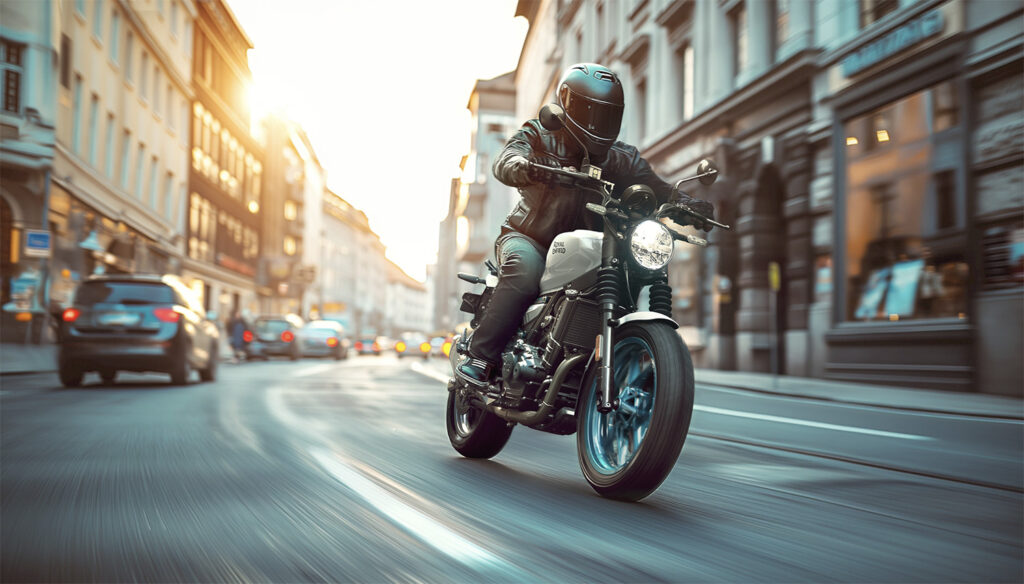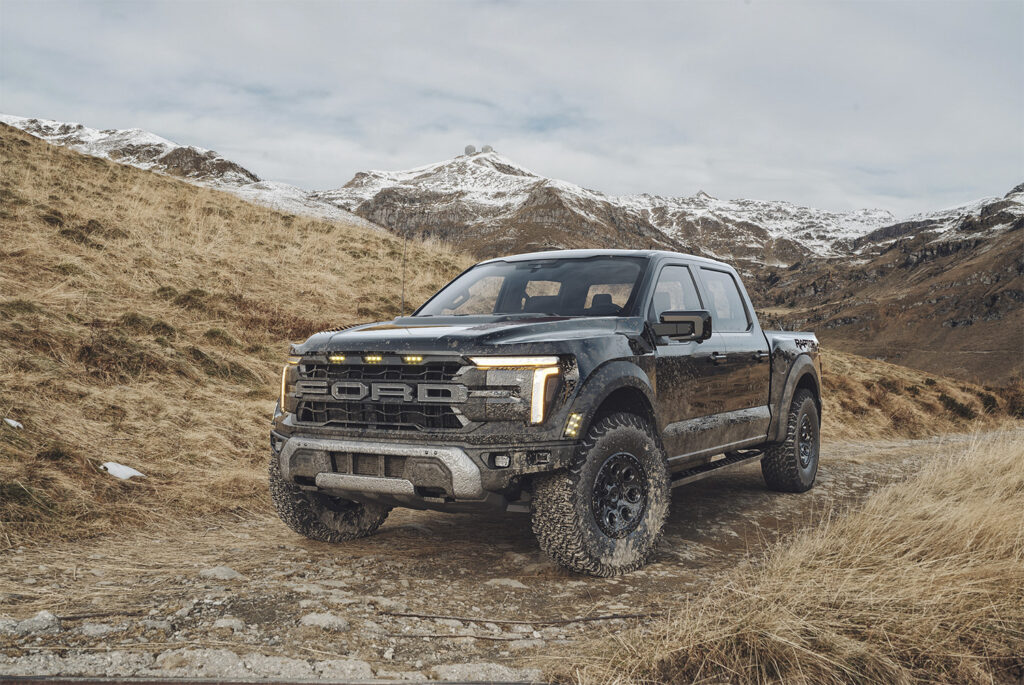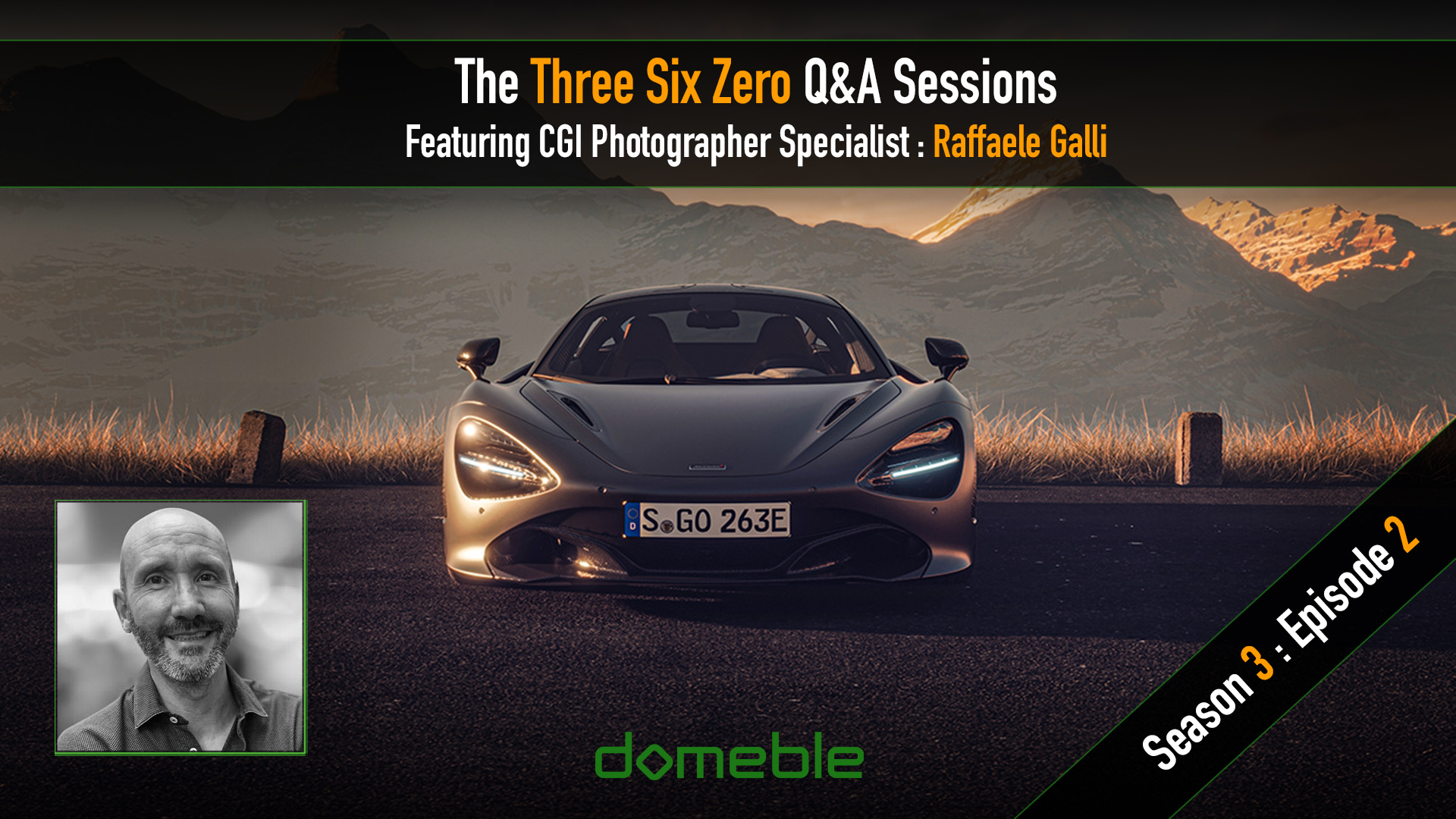We’re delighted to sit down with the very talented CGI photographer Raffaele Galli for this episode of the Three Six Zero Q&A sessions. Raffaele discusses his career, his vision and how he sees the current state of our industry.
What was your route into the industry?
I started as 3d modeler in the cgi industry as freelancer for about 10 years and then approached to rendering/lighting. Automotive and Product design are always been my main focus.
You shoot some amazing backplates and 360 HDRI maps, how did you end up in this space and what excites you about it?
I started studying Pano photography on my own combining my passion for Landscape/Architecture photography with the CGI, finding a way to combine the 2 worlds in HDRI textures creation. My approach to HDRI is very technical and i don’t accept any compromise in terms of quality, i don’t fake lighting and my HDRIs are shooted respecting and reflecting the real life lighting conditions with the aim to capture the maximum EV range possible.
You are producing some fantastic CG content, what do you enjoy about it, and what flavours of software are part of your workflow?
The CG content I create is 99 out of 100 based on my own HDRI sets. My CG works are oriented to promote my own HDRI sets and also to free my creativity. I’m a 3dsmax user and i use Chaos Corona as rendering engine.

How do you approach a new project? What is your process?
The first task is finding the car that best match in visual terms with the HDRI set or in case of full CGI jobs defining the environment and then the car that best fits with it. Because my HDRI sets are “ready to use” i don’t have to struggle with settings or adjustments, so once the car model has been identified i place it into the scene, apply materials, choose the views and camera and hit render! This job takes usually a few days to complete.
What do you think about the relationship between CG and photography ?
The relation between CG and Photography is nowadays essential even if AI is taking hold in an exponential way. The “human” factor in photography is still required.

AI is changing all our lives especially in the creative world, have you experimented much with it, and what are your thoughts on how it will effect us as creatives?
I used recently AI as upscaler and to add details in CGI scene when textures where lacking of details. It permits to do skip hours of editing and doesn’t require any knowledge (i.e. retouching), but as said previously the human factor is stil required and it can’t be described with a prompt. In other terms AI is helpful driving concepts to life. To me it’s tool of many into the workflow.
What big projects have you worked on and enjoyed working on most?
Creating full-cgi sets are always challenging. The biggest one that i’ve working on was set in a Alps location (www.behance.net/gallery/138171707/Alps-Full-CGI-Set). The purpose of the project has been creating multiple spots with relative hdri domes and backplates. The hardest part has been creating mountains in GAEA and texturing them in a realistic way then creating the proper lighting to simulate the same lighting conditions as Alps sceneries.
What are the biggest challenges you face in your work?
As HDRI photographer the biggest challenge is finding the best location for a project according to the shooting conditions. There are many factors to consider such as traffic, people and weather. Talking about the 3d artist side, the biggest challenge is time and pressure, combined when deadlines are strict and you have to manage multiple jobs.
Can you describe a project that required you to overcome a particularly difficult technical challenge?
Every project that requires to create assets on your own requires big efforts. One of this was the one described at bullet 2 of course.
What do you think is the future of CG technology and its impact on the industry?
I think that the future of CG industry can be described in 3 bullet points:
- AI driven animation tools
- VR/AR AI driven applications
- Real-time rendering.
There is an inevitable shift towards Realtime software in the post production and real time image and animation workflows, what’s your thoughts on that?
Real-time in animation workflow bring many advantages such as a boost in team productivity by enhancing communication between people and reducing the time to market as well as costs while extending the limits on an artist in the asset development helping creativity.
Where do you see the future of rendering and HDR development?
HDR imagery will be still part of the industry but AI will take again part into the workflow in the backplate development and post production.
Do you enjoy working with our Domeble content, and do you appreciate the quality assurance that it delivers?
Domeble provides very valuable content, a wide variety of locations with accurate HDRI domes and matching backplates. I found it very helpful because of the range of views to choose from.
It’s an ever changing world, and an ever changing industry we work in too, what do you think the industry will be like in 5 years time?
I expect an ever-increasing automation of certain processes that previously required adequate skills, high costs and times. There will undoubtedly be a flattening of skills, while still opening up new possibilities. I see the 3D artist as an increasingly generalist figure.
And finally, what advice would Raffaele Galli give his 16 year old self now?
Many young people often ask me to recommend tutorials that explain how to obtain certain results. The reality is that there are no tutorials that explain how to do the magic because this is not only a matter of technical knowledge but also inspiration, creativity and heart. I could explain the techniques and the use of the software but to arrive at a certain result you need experience, study and also mistakes.











